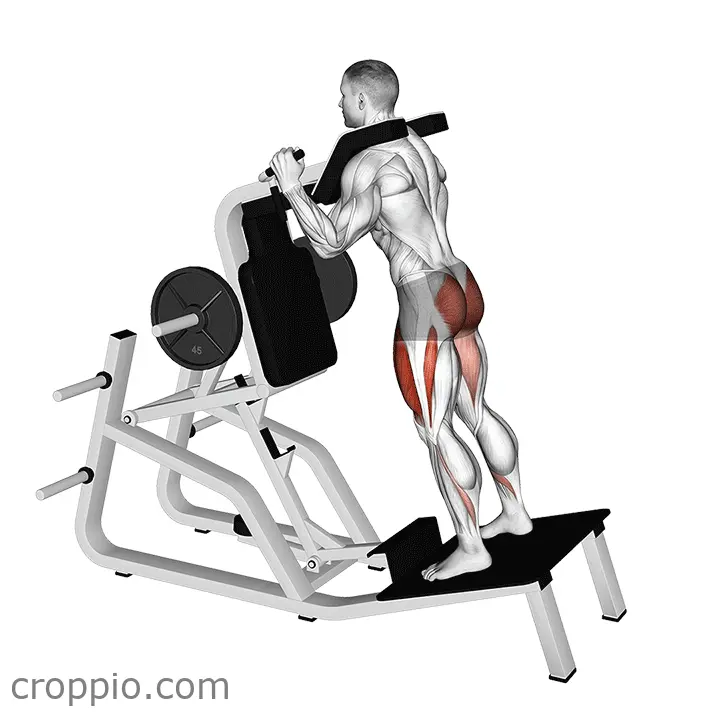Belt Squat Between Boxes

Muscles Involved
The belt squat between boxes primarily targets the quadriceps, glutes, and hamstrings. By standing on two boxes while using a squat belt, the exercise emphasizes vertical movement and maximizes leg muscle engagement. The quadriceps handle the workload during the squat phase, while the glutes are activated as you power through the ascent. Additionally, the hamstrings provide essential support and stabilization throughout the movement. Secondary muscles involved include the calves and the core, as both work to maintain balance and posture during the squat.
Top Mistakes
- Failing to maintain proper spine alignment, which can lead to undue stress on the lower back.
- Allowing the knees to cave inward instead of keeping them aligned with the toes, risking injury.
- Not lowering to an adequate depth, which limits the effectiveness of the exercise.
- Using too much weight too soon, compromising form for resistance.
Execution Tips
- Begin by setting up two sturdy boxes at a height that allows for comfortable squatting, typically around knee level.
- Secure the squat belt around your waist, ensuring it sits comfortably without slipping.
- Stand tall with feet shoulder-width apart, and engage your core to provide stability.
- As you squat, push your hips back and bend your knees, keeping your chest up and spine neutral.
- Lower until your thighs are at least parallel to the ground, then push through your heels to rise back up to the starting position.
- Focus on exhaling as you push up, which helps maintain core engagement.
Workouts
The belt squat between boxes can be an excellent addition to a lower body workout routine. A suggested approach is to perform 3-4 sets of 8-12 repetitions, depending on your fitness level. For increased challenge, consider pairing it with other exercises such as hip thrusts or deadlifts for comprehensive lower body engagement. Always remember to include a proper warm-up and cooldown session to prevent injury and promote recovery.
Conclusion
Incorporating the belt squat between boxes into your workout can significantly enhance lower body strength while minimizing strain on the back. This exercise encourages proper squatting mechanics and targets multiple muscle groups, making it particularly beneficial for athletes and those looking to improve their leg power. By focusing on form and avoiding common mistakes, you can maximize the effectiveness of this exercise and achieve your fitness goals more efficiently.



